Saudi leads MEED’s latest economic activity index
31 January 2023

Saudi Arabia has continued to sit atop the MEED Economic Activity Index with the close of 2022, as its repeat of another bumper year of project contract awards set it well clear of the next most competitive regional projects market.
The index has generally seen the division between energy exporters and importers sharpen, with the former enjoying current account and, for the most part, fiscal surpluses, and the latter invariably facing trade deficits and persisting fiscal deficits.
High inflation, compounded by rising interest rates and high fuel prices, continues to erode economic prospects in the region. It has also pressured the finances of countries with artificially high currency pegs. Egypt has been forced to drop its currency peg three times in the past year, leaving it increasingly at the mercy of inflation.
Saudi Arabia stands largely apart from these pressures as the region’s largest oil producer. Its inflation rate in 2023 is projected by the IMF to be a minimal 2.2 per cent. While its rate of real GDP growth is expected to come down from 7.6 per cent in 2022 to 3.7 per cent in 2023, this remains high amid the glum projections that up to a third of the global economy could enter recession this year.
Together with the UAE, Qatar, Kuwait and surprisingly Iraq, Saudi Arabia is expected to maintain a double-digit current account surplus in 2023, as well as a fiscal surplus, despite the kingdom’s rising project spending.
There is a further $95bn-worth of project value in the bidding stage [in Saudi Arabia], boding well for the potential of 2023 to be another bumper – if not record – year for the Saudi contracting sector
Project potential
Saudi Arabia’s project market maintained its momentum in 2022, seeing the award of 53bn-worth of project value, 1.3 per cent more than in 2021 and 46 per cent higher than the annual average over the preceding five years.
The award figure also exceeded the value of projects coming to completion over the course of the year by $21bn – a strong net positive result for the market.
There is a further $95bn-worth of project value in the bidding stage, boding well for the potential of 2023 to be another bumper – if not record – year for the Saudi contracting sector.
Mixed performances
The UAE, while retaining the second position in the index, has seen its score slip. Despite having strong real GDP growth and fiscal projections for 2023, the country remains well down from historic highs – the $18.7bn-worth of project awards in 2022 was just 53 per cent of the $35.1bn average in 2017-21. The market also shed $20bn in value as completions outstripped awards.
The $56.4bn of projects in bidding and due for award in 2023 makes the prospect of a turnround a possibility, but there is no guarantee given the global uncertainty.
Qatar has meanwhile risen strongly in the index since the third quarter of 2022, despite a real GDP growth projection by the IMF of just 2.4 per cent in 2023 – as the boost to non-oil GDP from the Fifa World Cup wears off.
Qatar’s project awards also fell in 2022 following a spike in 2021. The $14bn of awards in 2022 nevertheless remained almost level with the five-year average.
Kuwait also has a slightly lower real GDP projection in 2023, but strong overall fundamentals. Project activity also continues to tick over in the country, albeit at a slower than usual pace. The country has $27.6bn-worth of projects in the bid stage – a figure nearly 10 times the $2.8bn-worth of awards in 2022, which fell well below the $5.6bn average for the preceding five years.
The remaining GCC nations, Oman and Bahrain, and another Gulf energy exporter, Iraq, all also boast healthy current account surpluses. From there however, the countries diverge.
Oman is in a much better position heading into 2023, having stabilised its fiscal situation and eliminated its deficit. The country also has the lowest forecast consumer price inflation rate in the region heading into 2023, at just 1.9 per cent. Furthermore, the country has a burgeoning $19.7bn-worth of projects in the bid stage that could soon bolster its projects market.
Bahrain continues to struggle with both a persisting fiscal deficit and a debt burden – equivalent to about 120 per cent of its GDP. The country’s projects market slumped in 2022, with the less than $1bn of contract awards compared to $2.6bn in completions.
Iraq remarkably sits just below the GCC countries in the index thanks to its oil-fuelled GDP growth and twin double-digit current account and fiscal surpluses. Iraq’s project activity nevertheless fell away in 2022, which saw just $5bn-worth of awards – compared to $17bn the previous year and a $12bn five-year average. The $28bn-worth of projects in the bidding stage could nevertheless make for better things to come.
Egypt’s projects market has recently been in the ascendant, but its broader economic fortunes are now in sharp decline. The full impact of the country’s currency crisis has yet to be revealed, but Cairo already has twin current account and fiscal deficits.
Iraq remarkably sits just below the GCC countries in the index thanks to its oil-fuelled GDP growth and twin double-digit current account and fiscal surpluses
Facing challenges
Algeria, Morocco, Jordan and Tunisia are all struggling to break even in the current economic climate and have double-digit unemployment. This is ironic in the case of Algeria, which is an energy exporter with a current account surplus and yet double-
digit fiscal deficit.
Below this, Iran continues to be hampered by sanctions, creeping economic malaise and an estimated 40 per cent consumer price inflation rate amid a steadily collapsing import subsidies regime.
Libya, despite resurgent oil growth, has nearly 20 per cent unemployment and 50 per cent youth unemployment due to the civil war. Reconstruction efforts in the country also showed signs of stalling in 2022 as the project award value dropped off, with many projects stuck in the bid stage.
Yemen and Lebanon close out the index with dismal economic performances due to their respective ongoing conflict and economic crisis. Remarkably, with almost one-in-three out of work and unchecked inflation, Lebanon is managing to underperform even Yemen.
About the indexMEED’s Economic Activity Index, first published in June 2020, combines macroeconomic, fiscal, social and risk factors, alongside data from regional projects tracker MEED Projects on the project landscape, to provide an indication of the near-term economic potential of Middle East and North African markets. |
Exclusive from Meed
-
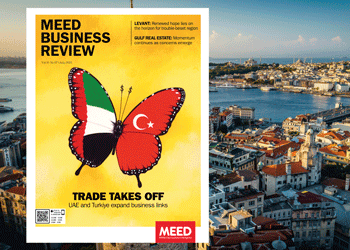 UAE and Turkiye ties deepen
UAE and Turkiye ties deepen4 July 2025
-
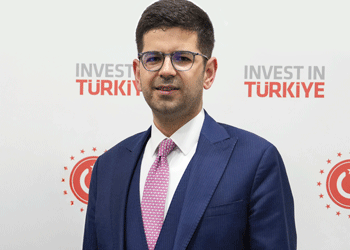 Building on UAE-Turkiye trade
Building on UAE-Turkiye trade4 July 2025
-
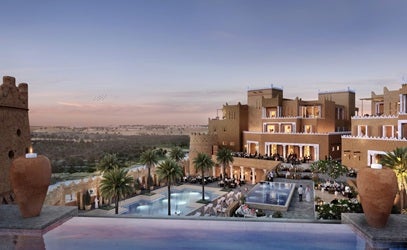
-
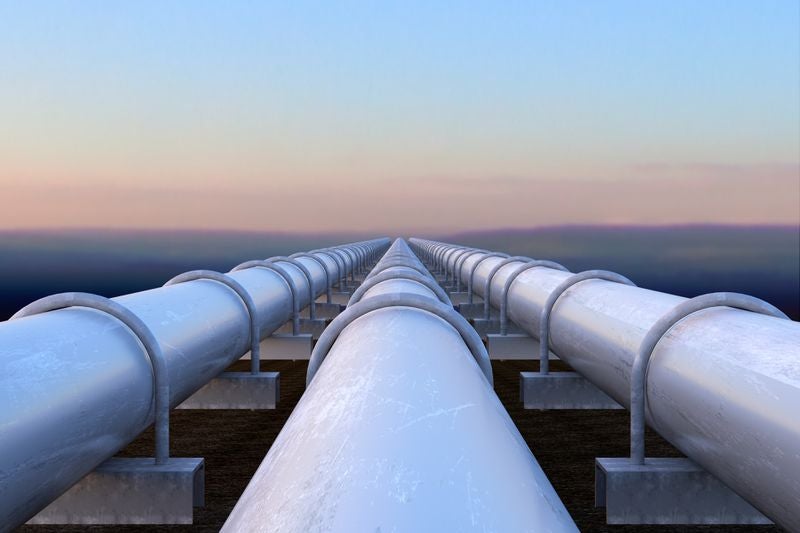 Court rules against Petrofac restructuring plans
Court rules against Petrofac restructuring plans4 July 2025
-
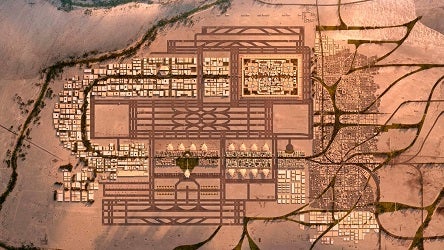
All of this is only 1% of what MEED.com has to offer
Subscribe now and unlock all the 153,671 articles on MEED.com
- All the latest news, data, and market intelligence across MENA at your fingerprints
- First-hand updates and inside information on projects, clients and competitors that matter to you
- 20 years' archive of information, data, and news for you to access at your convenience
- Strategize to succeed and minimise risks with timely analysis of current and future market trends

Related Articles
-
 UAE and Turkiye ties deepen
UAE and Turkiye ties deepen4 July 2025
 Commentary
Commentary
Colin Foreman
EditorRead the July issue of MEED Business Review
The growing trade volumes between the UAE and Turkiye involve a mix of competition and collaboration across various sectors.
One area of competition is aviation. Turkish Airlines has emerged as a major global player over the past 20 years, with its network now covering more countries than any other airline.
Turkiye’s aviation sector entered a new era in 2019 when Istanbul Grand airport opened. The first phase has the capacity to handle 90 million passengers a year, and the plan is for the capacity to reach 200 million once later phases are completed.
The airport’s globally strategic location combined with its large and expandable capacity will give Turkiye’s aviation
sector an edge over its competitors in the Gulf over the next decade as construction starts on major airports, including Dubai and Riyadh.While competition is evident, Turkish Airlines insists there is enough room for it and the Gulf airlines to grow as the centre of gravity for global aviation shifts from west to east.
On a macro level, the UAE and Turkiye are complementary economies
Beyond aviation, the trade relationship encompasses a wide range of sectors, including defence, logistics and construction. Over the past two years, Turkish contractors have secured significant contracts in the UAE. Turkish construction companies are now exporting the experience they have gained on projects in Turkiye to the UAE, as major government- backed infrastructure projects that include airports and railways move into tendering.
At the same time, UAE investments in Turkiye’s energy and financial sectors are growing, with notable examples including Emirates NBD’s investment in DenizBank and International Holding Company’s investment in Kalyon Energy.
These investments show that on a macro level, the UAE and Turkiye are complementary economies, with each holding a different mix of resources, capital and expertise. The strategic location of both countries amplifies the business case for trade even further.
 READ THE JULY 2025 MEED BUSINESS REVIEW – click here to view PDF
READ THE JULY 2025 MEED BUSINESS REVIEW – click here to view PDFUAE and Turkiye expand business links; Renewed hope lies on the horizon for trouble-beset Levant region; Gulf real estate momentum continues even as concerns emerge
Distributed to senior decision-makers in the region and around the world, the July 2025 edition of MEED Business Review includes:
> AGENDA: UAE-Turkiye trade gains momentum> INTERVIEW 1: Building on UAE-Turkiye trade> INTERVIEW 2: Turkiye's Kalyon goes global> INTERVIEW 3: Strengthening UAE-Turkiye financial links> INTERVIEW 4: Turkish Airlines plans further growth> CURRENT AFFAIRS: Middle East tensions could reduce gas investments> GCC REAL ESTATE: Gulf real estate faces a more nuanced reality> PROJECTS MARKET: GCC projects market collapses> INTERVIEW 5: Hassan Allam eyes role in Saudi Arabia’s transformation> INTERVIEW 6: Aseer region seeks new investments for Saudi Arabia> LEADERSHIP: Nuclear power makes a global comeback> LEVANT MARKET FOCUS: Levant states wrestle regional pressures> GULF PROJECTS INDEX: Gulf projects index continues climb> CONTRACT AWARDS: Mena contract award activity remains subdued> ECONOMIC DATA: Data drives regional projects> OPINION: A farcical tragedy that no one can endTo see previous issues of MEED Business Review, please click herehttps://image.digitalinsightresearch.in/uploads/NewsArticle/14201376/main.gif -
 Building on UAE-Turkiye trade
Building on UAE-Turkiye trade4 July 2025
 This package on UAE-Turkiye relations also includes:
This package on UAE-Turkiye relations also includes:> UAE-Turkiye trade gains momentum
> Turkiye’s Kalyon goes global
> UAE-Turkiye financial links strengthen
> Turkish Airlines plans further growth

The UAE-Turkiye Comprehensive Economic Partnership Agreement (Cepa) that came into effect in September 2023 has already exceeded expectations.
Non-oil trade between the UAE and Turkiye grew by 11.5% in 2024, reaching a total of $40.5bn. This milestone surpasses a target of the Cepa three years earlier than planned. As a result, Turkiye is now the UAE’s fourth-largest non-oil trading partner, rising from seventh place in 2021.
Trade between the UAE and Turkiye is growing strongly, with both countries increasingly viewed as strategic hubs for accessing broader markets.
The growth story builds on already established business links between the two countries.
“UAE-based companies and funds are already very active in Turkiye,” says Burak Daglioglu, president of the investment and finance office of the Presidency of the Republic of Turkiye.
“Firms like DP World and others in private equity and venture capital are playing a key role.”
Strengthening ties
 Since the Cepa was signed in 2023, bilateral investment has accelerated, with Turkish companies also expanding into the UAE.
Since the Cepa was signed in 2023, bilateral investment has accelerated, with Turkish companies also expanding into the UAE. “That’s the mark of a healthy relationship,” he says. “When it’s balanced and bilateral, it’s more sustainable.”
He adds that companies in both countries see the other not just as a market, but as a hub. “UAE firms use Turkiye to access Europe and Central Asia; Turkish firms use the UAE to reach Asia and Africa. This creates a complementary strategy for both sides.”
In the energy sector, the focus is on renewables, with UAE firms eyeing major solar and wind projects in Turkiye. “We have huge potential in renewables, and there are ongoing talks with UAE investors,” says Daglioglu.
In technology, Turkiye is emerging as a regional player in artificial intelligence (AI), financial technology (fintech), and healthcare technology.
“Our infrastructure is increasingly AI-ready,” he says. “We have data centres, renewable power sources and connectivity.
“We also have a robust startup ecosystem, with early-stage funding rising from under $100m a decade ago to over $1bn today.”
Defence is another key area of cooperation. “There are some ongoing projects in the defence sector between Turkiye and the UAE,” Daglioglu says. “It’s better not to name names at this stage, but it’s a promising area.”
Venture capital (VC) is also playing an important role in promoting regional innovation. “Ten years ago, the startup scene was nascent. Now, it’s a cornerstone of our investment strategy. Dubai, as a regional VC hub, has been instrumental.”
To support this growth, Turkiye has developed local VC legislation and attracted international funds, including those from Saudi Arabia, UAE family offices and corporate investors. A joint UAE-Turkiye technology fund worth $300m is also nearing finalisation.
“It’s not just about exits anymore. Turkish startups are scaling regionally and globally, with Dubai often serving as their capital and client gateway.”
Turkiye is also a major industrial hub and, with a population of 85 million, has extensive human resources. “We have the talent, the infrastructure and the resilience,” he says.
“From automotive and mobility to chemicals and energy storage, we are expanding our industrial base.”
We have huge potential in renewables, and there are ongoing talks with UAE investors
Looking ahead
Turkiye’s trade with the UAE and the rest of the GCC could be enhanced even further with the Development Road project, which is a 1,200-kilometre highway and railway linking Iraq’s southern Faw Port to Europe through Turkiye.
“The Development Road will not happen overnight – it’s a long-term, complex undertaking,” Daglioglu says. “But its impact will be global. Reducing shipping lead times between Asia and Europe by up to a week is hugely significant in today’s fast-moving markets.”
Designed to connect the Gulf to Europe through Turkiye, the Development Road includes a high-speed rail network for both cargo and passengers, as well as a parallel motorway.
For Daglioglu, the Development Road corridor offers Turkiye, the UAE and the GCC states another platform for economic diversification.
“This is more than a transport project, it’s a regional realignment,” he says.
“It will unlock a flow of goods, people, capital and data. Fibre infrastructure can run alongside the rail and motorway, creating a dual-purpose corridor that will support our AI and digital economy ambitions.”
Historically, Turkiye has been well integrated with northern markets in Europe. Due to years of conflict in Iraq and Syria, however, its southern connectivity has lagged.
The Development Road, along with recent discussions to reopen direct links with Syria, offers opportunities for southern expansion.
“We have invested heavily in northern logistics. Now, it’s time to strengthen our southern corridor,” Daglioglu says. “The Development Road could finally make direct access to the GCC markets a reality.”
The corridor could also open up new avenues for digital infrastructure, such as subsea cables and terrestrial fibre,
further linking the region’s digital economies.“This could be the basis for a digital Silk Road, supporting everything from AI to fintech.”
https://image.digitalinsightresearch.in/uploads/NewsArticle/14201047/main.gif -
 Firms submit Diriyah’s Radisson Red superblock prequalifications
Firms submit Diriyah’s Radisson Red superblock prequalifications4 July 2025

Register for MEED’s 14-day trial access
Saudi gigaproject developer Diriyah Company has received prequalification statements from firms interested in constructing the upcoming Radisson Red superblock in the second phase of the Diriyah Gate development (DG2).
The prequalification notice was issued on 11 June, and submissions were made on 22 June.
The Radisson Red superblock consists of a hotel, residential apartments, retail facilities, commercial office spaces and a park.
The project is situated in the Boulevard East district, between King Khalid Road and the Grand Boulevard in Diriyah.
The project is the latest in a series of other superblocks that are expected to be floated to the market this year, including the Waldorf Astoria superblock, Edition superblock and Pendry superblock.
Diriyah tendered a contract in April to build the new iconic museum in the DG2 area.
The same month, MEED exclusively reported that the client had awarded an estimated SR4bn ($1.1bn) contract for a utilities relocation package for the King Saud University (KSU) project located in DG2.
The contract was awarded to the joint venture of Beijing-headquartered China Railway Construction Corporation and China Railway Construction Group Central Plain Construction Company.
Also in April, MEED reported that the company had awarded an estimated SR5bn ($1.3bn) construction deal to build the Royal Diriyah Opera House.
The contract was awarded to a joint venture of local firm El-Seif Engineering & Contracting, Beijing-headquartered China State Construction Engineering Corporation and Qatari firm Midmac Contracting.
Tendering activity is also progressing on several other major schemes at Diriyah, including the King Khalid Road project, which passes through the development. The client received bids from firms in the second week of April for the main construction works on this project.
The client is also expected to finalise the contract award shortly for the Arena Block assets in the Boulevard Southwest section in the DG2 area.
Diriyah gigaproject
The Diriyah masterplan envisages the city as a cultural and lifestyle tourism destination. Located northwest of Riyadh’s city centre, it will cover 14 square kilometres and combine 300 years of history, culture and heritage with hospitality facilities.
The company awarded several significant contracts last year, including three contracts worth over SR21bn ($5.5bn). These included an estimated $2bn contract awarded to a joint venture of El-Seif Engineering & Contracting and China State to build the North Cultural District.
In July last year, Diriyah also awarded a $2.1bn package to a joint venture of local contractor Albawani and Qatar’s Urbacon to construct assets in the Wadi Safar district of the gigaproject.
Then in December, Diriyah Company awarded an estimated SR5.8bn ($1.5bn) contract to local firm Nesma & Partners for its Jabal Al-Qurain Avenue cultural district, located in the northern district of the Diriyah Gate project.
Once complete, Diriyah will have the capacity to accommodate 100,000 residents and visitors.
 READ THE JULY 2025 MEED BUSINESS REVIEW – click here to view PDF
READ THE JULY 2025 MEED BUSINESS REVIEW – click here to view PDFUAE and Turkiye expand business links; Renewed hope lies on the horizon for trouble-beset Levant region; Gulf real estate momentum continues even as concerns emerge
Distributed to senior decision-makers in the region and around the world, the July 2025 edition of MEED Business Review includes:
> AGENDA: UAE-Turkiye trade gains momentum> INTERVIEW 1: Building on UAE-Turkiye trade> INTERVIEW 2: Turkiye’s Kalyon goes global> INTERVIEW 3: Strengthening UAE-Turkiye financial links> INTERVIEW 4: Turkish Airlines plans further growth> CURRENT AFFAIRS: Middle East tensions could reduce gas investments> GCC REAL ESTATE: Gulf real estate faces a more nuanced reality> PROJECTS MARKET: GCC projects market collapses> INTERVIEW 5: Hassan Allam eyes role in Saudi Arabia’s transformation> INTERVIEW 6: Aseer region seeks new investments for Saudi Arabia> LEADERSHIP: Nuclear power makes a global comeback> LEVANT MARKET FOCUS: Levant states wrestle regional pressures> GULF PROJECTS INDEX: Gulf projects index continues climb> CONTRACT AWARDS: Mena contract award activity remains subdued> ECONOMIC DATA: Data drives regional projects> OPINION: A farcical tragedy that no one can endTo see previous issues of MEED Business Review, please click herehttps://image.digitalinsightresearch.in/uploads/NewsArticle/14200629/main.jpg -
 Court rules against Petrofac restructuring plans
Court rules against Petrofac restructuring plans4 July 2025
An appeals court in the UK has upheld an appeal against Petrofac’s restructuring plans, increasing uncertainty about the UK-based engineering company’s future.
The appeal was brought by Italy’s Saipem and South Korea’s Samsung E&A.
The ruling against the restructuring plans comes less than two months after Petrofac received formal approval from the High Court of England & Wales to implement its restructuring plan.
Petrofac previously said that its restructuring plan would unlock $355m in new funding for its operations.
Petrofac said on 1 July that the appeal was upheld “on narrow grounds associated with the terms of the 'new money' financing and the evidence provided in support of it”, that had previously been accepted by the High Court.
The company said that all other grounds of appeal were unsuccessful.
It added that it was “carefully studying” the detailed judgment and would discuss with key stakeholders its implications and potential routes forward.
The company’s shares were suspended from trading on the UK stock exchange at the end of April due to Petrofac’s failure to publish its 2024 financial results on time.
Wood Group, another UK-based engineering company that is active in the Middle East and North Africa region, also saw its shares suspended on the same day, for the same reason.
In January this year, Petrofac announced that it had reached a binding agreement with its creditors.
Petrofac has been struggling with financial problems since its share price collapsed in December 2023.
 READ THE JULY 2025 MEED BUSINESS REVIEW – click here to view PDF
READ THE JULY 2025 MEED BUSINESS REVIEW – click here to view PDFUAE and Turkiye expand business links; Renewed hope lies on the horizon for trouble-beset Levant region; Gulf real estate momentum continues even as concerns emerge
Distributed to senior decision-makers in the region and around the world, the July 2025 edition of MEED Business Review includes:
> AGENDA: UAE-Turkiye trade gains momentum> INTERVIEW 1: Building on UAE-Turkiye trade> INTERVIEW 2: Turkiye's Kalyon goes global> INTERVIEW 3: Strengthening UAE-Turkiye financial links> INTERVIEW 4: Turkish Airlines plans further growth> CURRENT AFFAIRS: Middle East tensions could reduce gas investments> GCC REAL ESTATE: Gulf real estate faces a more nuanced reality> PROJECTS MARKET: GCC projects market collapses> INTERVIEW 5: Hassan Allam eyes role in Saudi Arabia’s transformation> INTERVIEW 6: Aseer region seeks new investments for Saudi Arabia> LEADERSHIP: Nuclear power makes a global comeback> LEVANT MARKET FOCUS: Levant states wrestle regional pressures> GULF PROJECTS INDEX: Gulf projects index continues climb> CONTRACT AWARDS: Mena contract award activity remains subdued> ECONOMIC DATA: Data drives regional projects> OPINION: A farcical tragedy that no one can endTo see previous issues of MEED Business Review, please click herehttps://image.digitalinsightresearch.in/uploads/NewsArticle/14200679/main.jpg -
 King Salman airport sets July deadline for fourth runway bids
King Salman airport sets July deadline for fourth runway bids4 July 2025

King Salman International Airport Development Company (KSIADC) has allowed firms until 8 July to bid for the design-and-build of the fourth runway at King Salman International airport (KSIA) in Riyadh.
The tender was floated on 17 April. The previous bid submission deadline was 17 June.
It is understood that the third and fourth runways will add to the two existing runways at Riyadh’s King Khalid International airport, which will eventually become part of KSIA.
KSIADC, which is backed by Saudi Arabia’s Public Investment Fund, prequalified firms in September last year for the main engineering, procurement and construction packages; early and enabling works; specialist systems and integration; specialist systems, materials and equipment; engineering and design; professional services; health, safety, security, environment and wellbeing services; modular installation and prefabrication; local content; and environmental, social and governance and other services.
The entire scheme is divided into eight assets. These are:
- Iconic Terminal
- Terminal 6
- Private aviation terminal
- Central runway and temporary apron
- Hangars
- Landside transport
- Cargo buildings
- Real estate
In August last year, KSIADC confirmed it had signed up several architectural and design firms for the various elements of the project.
UK-based Foster+Partners will design the airport’s masterplan, including the terminals, six runways and a multi-asset real estate area.
US-based engineering firm Jacobs will provide specialist consultancy services for the masterplan and the design of the new runways.
UK-based engineering firm Mace was appointed as the project’s delivery partner, and local firm Nera was awarded the airspace design consultancy contract.
Project scale
The project covers an area of about 57 square kilometres (sq km), allowing for six parallel runways, and will include the existing terminals at King Khalid International airport. It will also include 12 sq km of airport support facilities, residential and recreational facilities, retail outlets and other logistics real estate.
If the project is completed on time in 2030, it will become the world’s largest operating airport in terms of passenger capacity, according to UK analytics firm GlobalData.
The airport aims to accommodate up to 120 million passengers by 2030 and 185 million by 2050. The goal for cargo is to process 3.5 million tonnes a year by 2050.
Saudi Arabia plans to invest $100bn in its aviation sector. Riyadh’s Saudi Aviation Strategy, announced by the General Authority of Civil Aviation (Gaca), aims to triple Saudi Arabia’s annual passenger traffic to 330 million travellers by 2030.
It also aims to increase air cargo traffic to 4.5 million tonnes and raise the country’s total air connections to more than 250 destinations.
 READ THE JULY 2025 MEED BUSINESS REVIEW – click here to view PDF
READ THE JULY 2025 MEED BUSINESS REVIEW – click here to view PDFUAE and Turkiye expand business links; Renewed hope lies on the horizon for trouble-beset Levant region; Gulf real estate momentum continues even as concerns emerge
Distributed to senior decision-makers in the region and around the world, the July 2025 edition of MEED Business Review includes:
> AGENDA: UAE-Turkiye trade gains momentum> INTERVIEW 1: Building on UAE-Turkiye trade> INTERVIEW 2: Turkiye's Kalyon goes global> INTERVIEW 3: Strengthening UAE-Turkiye financial links> INTERVIEW 4: Turkish Airlines plans further growth> CURRENT AFFAIRS: Middle East tensions could reduce gas investments> GCC REAL ESTATE: Gulf real estate faces a more nuanced reality> PROJECTS MARKET: GCC projects market collapses> INTERVIEW 5: Hassan Allam eyes role in Saudi Arabia’s transformation> INTERVIEW 6: Aseer region seeks new investments for Saudi Arabia> LEADERSHIP: Nuclear power makes a global comeback> LEVANT MARKET FOCUS: Levant states wrestle regional pressures> GULF PROJECTS INDEX: Gulf projects index continues climb> CONTRACT AWARDS: Mena contract award activity remains subdued> ECONOMIC DATA: Data drives regional projects> OPINION: A farcical tragedy that no one can endTo see previous issues of MEED Business Review, please click herehttps://image.digitalinsightresearch.in/uploads/NewsArticle/14200608/main.jpg


